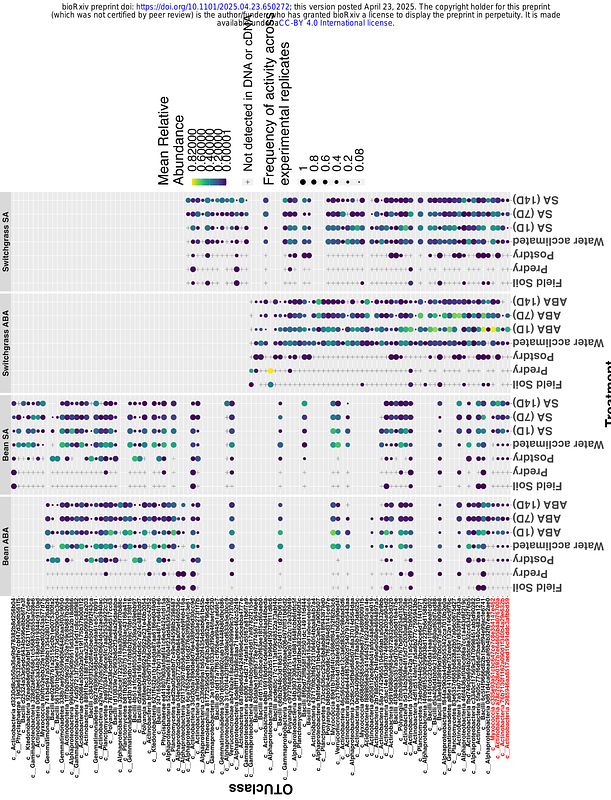Activation dynamics and assembly of root zone soil bacterial communities in response to stress-associated phytohormones

Activation dynamics and assembly of root zone soil bacterial communities in response to stress-associated phytohormones
Bandopadhyay, S.; Bagchi, O.; Shade, A.
AbstractPlants can \"cry for help\" to recruit supportive microbiome members during stressful conditions. We evaluated the activation dynamics of root zone soil bacteria in response to phytohormones produced when plants are stressed, hypothesizing that the activated taxa support plant resilience. We conducted a 2-week laboratory experiment using mesocosms of root zone soil collected from two different crops: the annual legume common bean (Phaseolus vulgaris L.) and the perennial grass switchgrass (Panicum virgatum). We inactivated the microbiome by drying and then treated the soils with either abscisic acid, salicylic acid, a carrier control (methanol), or water, and then quantified the reactivation dynamics of bacterial populations over time, at one, 7, and 14 days after phytohormone addition, using amplicon sequencing of 16S rRNA and rDNA. There were several Actinobacterial taxa that switched from an average population-inactive to a population-active state after exposure to abscisic acid and salicylic acid, with Microbispora lineages switching especially noted. Some taxa were activated only in one crops soil, and some were activated in both crops soils in response to the same phytohormone. This work suggests that different bacteria have different specificities to phytohormones as plant stress signals and provides insights into understanding the mechanisms by which stressed plants may \"cry for help\" to recruit bacteria from the root zone to the rhizosphere.